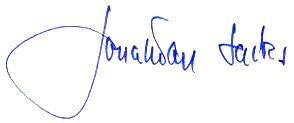 Seasons of Love:Song of Songs, Book of Ruth, Ecclesiastes
Seasons of Love:Song of Songs, Book of Ruth, Ecclesiastes
By Rav. Jonathan Sacks
Seasons of Love
Shir HaShirim (which will be read on the afternoon of Shabbat chol ha’moed Pesach) is not the only biblical book about love. It is a complex emotion that cannot be defined from a single perspective, nor do all its dimensions become apparent at the same time. In a way that is subtle and richly complex, the Shalosh Regalim, the three pilgrimage festivals, all have their special book, each about love but about different phases of it.
Shir HaShirim, the Song of Songs, on Pesach is about love as passion. The lovers are young. There is no mention of marriage, a home, children, responsibility. They have no thought for the morrow nor for others. They are obsessed with one another. They live conscious of the other’s absence, longing for the other’s presence. That is how love should be some of the time if it is to be deep and transforming all the time.
The book of Ruth, the scroll we read on Shavuot, is about love as loyalty: Ruth’s loyalty to her mother-in-law Naomi, and Boaz’s to Naomi, Ruth and the family heritage. It is about “loving-kindness,” the word coined by Myles Coverdale in his Bible translation of 1535 because he could find no English word that meant chesed. Beginning as it does with death, bereavement and childlessness, and ending with marriage and the birth of a child it is about the power of love to redeem grief and loneliness and “make gentle the life of this world.” It is about what Shir HaShirim is not: about marriage, continuity and keeping faith with “the living and the dead” (Ruth 2:20). That too, in Judaism, is a significant part of love, for we are not just selves: we are part of the living chain of generations.
Seasons of Love: On Sukkot we have a third story about love: love grown old and wise. Kohelet, Ecclesiastes, is a book easy to misread as a study in disillusionment, but that is because of sustained series of mistranslations of its key word, hevel. This is variously rendered as “vanity, vapor, meaningless, futile, useless,” leading readers to think that its author finds life without purpose or point. Hevel does not mean that: it means “a fleeting breath.” It is about the brevity of life on earth. It begins with the author seeking happiness in philosophy (chokhma), pleasure, laughter, the accumulation of wealth, fine houses and pleasure gardens, the perennial secular temptations. He discovers that none of them can defeat death. Objects last but those who own them do not. Wisdom may be eternal, but the wise still die.
We defeat death not by seeking a this-worldly immortality but by simcha, the spiritually and morally textured exhilaration about which William Blake wrote, “He who binds to himself a joy / Does the winged life destroy. / He who kisses the joy as it flies / Lives in eternity’s sun rise.” Kohelet learns that happiness is to be found not in what you own (bind to yourself) but in what you share. It exists not where you invest your money but where you give of yourself. It lives in work and love: “Enjoy life with the woman you love all the days of this fleeting life you have been given under the sun, all the fleeting days, for that is your portion in life and in all your labor under the sun” (Eccles. 9:9). This is love that has grown from passion to responsibility to existential joy: the joy of being with one you love.
The essential message of Judaism is contained in no one of these books but in the combination of all three. Eros is the fire that gives love its redemptive, transforming, other-directed quality. Marriage is the covenantal bond that turns love into a pledge of loyalty and brings new life into the world. Companionship, experience and a life well lived bring simcha, a word that appears only twice in Shir HaShirim, not at all in Ruth but seventeen times in Kohelet.
Love as passion; love as marriage and childbirth and continuity; love as abiding happiness: three stages of love, traced out in the course of a life and the course of a year and its seasons: Shir HaShirim in spring, Ruth in harvest time, Kohelet in autumn as the days grow colder and the nights longer. With a wonderful touch of serendipity, Kohelet ends with the advice, “Remember your Creator in the days of your youth, before the days of trouble come and the years approach when you will say, I find no pleasure in them” (12:1), thus leading us back to youthfulness, spring and the Shir HaShirim where we began.
Seasons of Love







